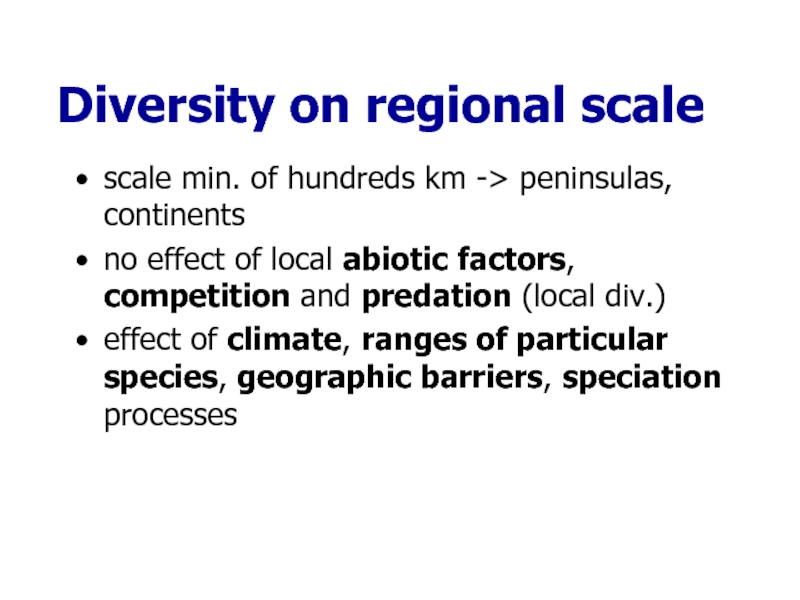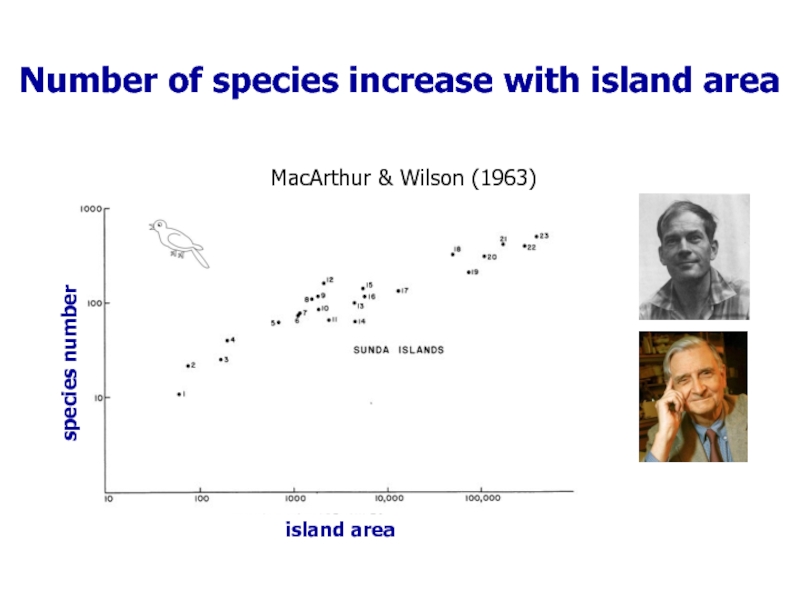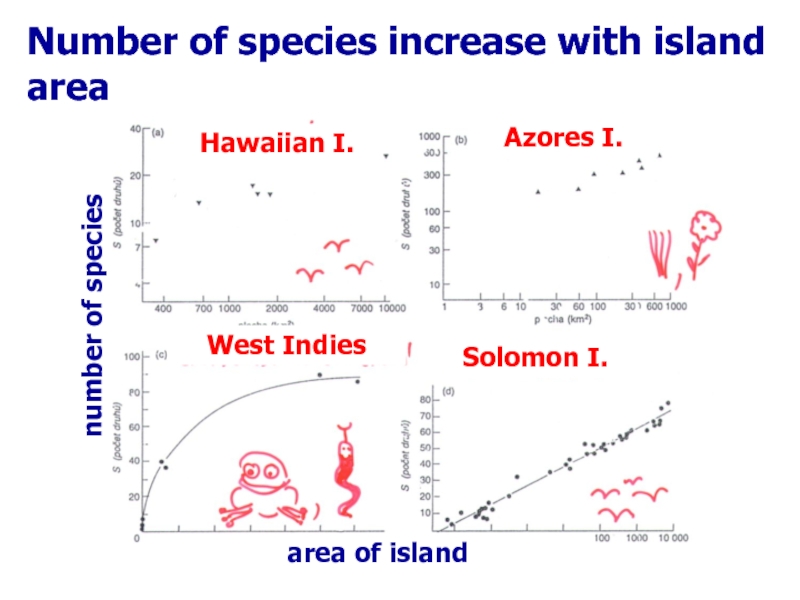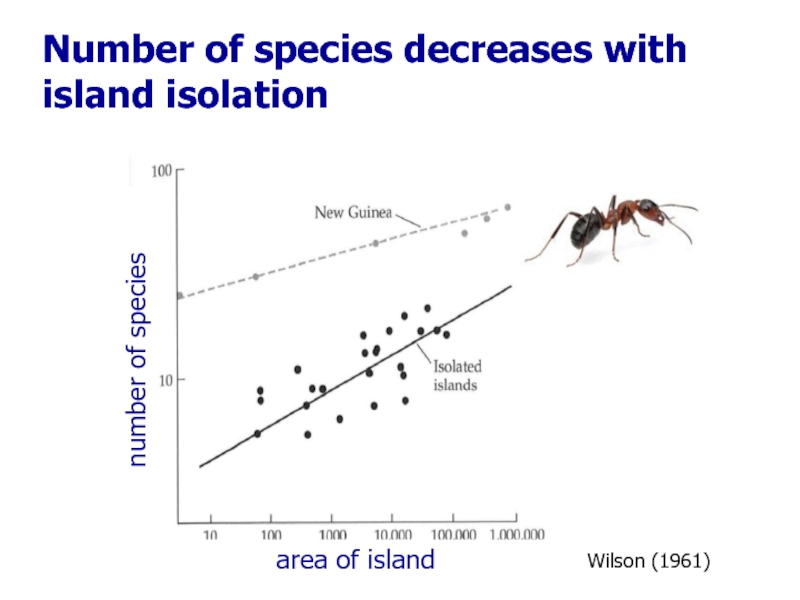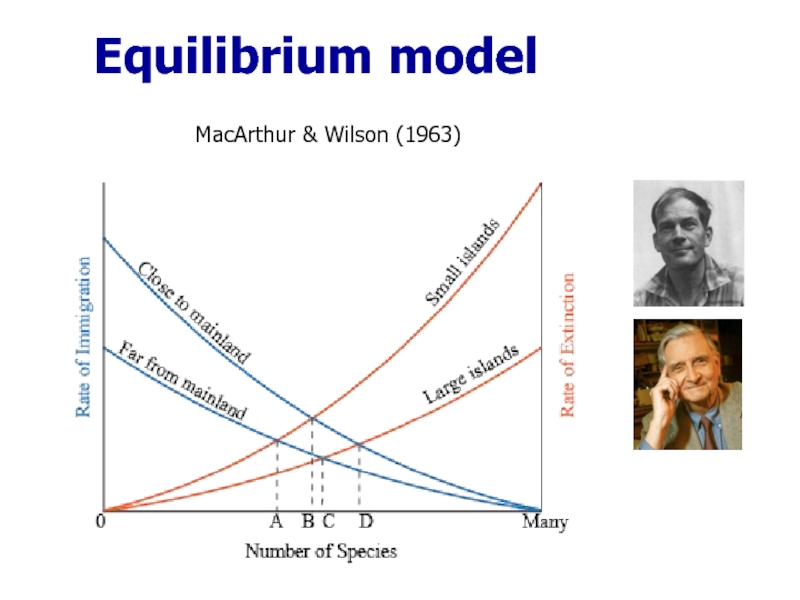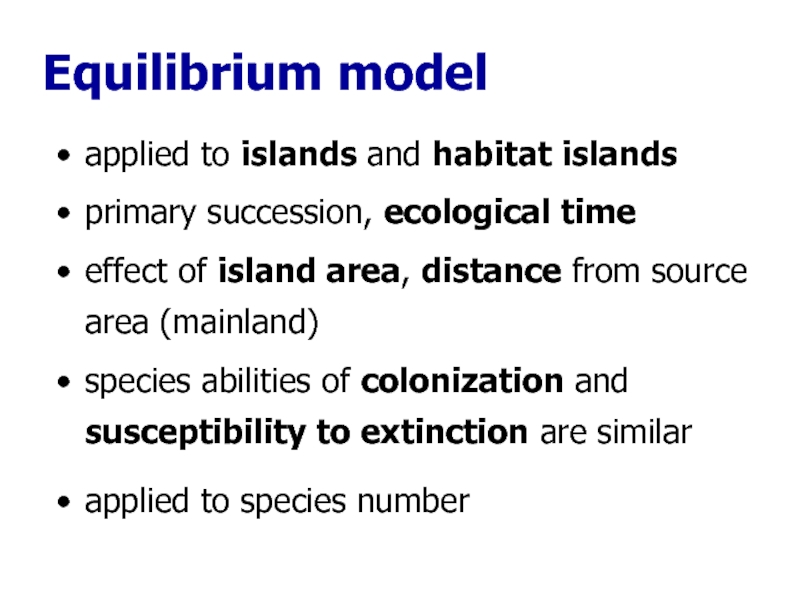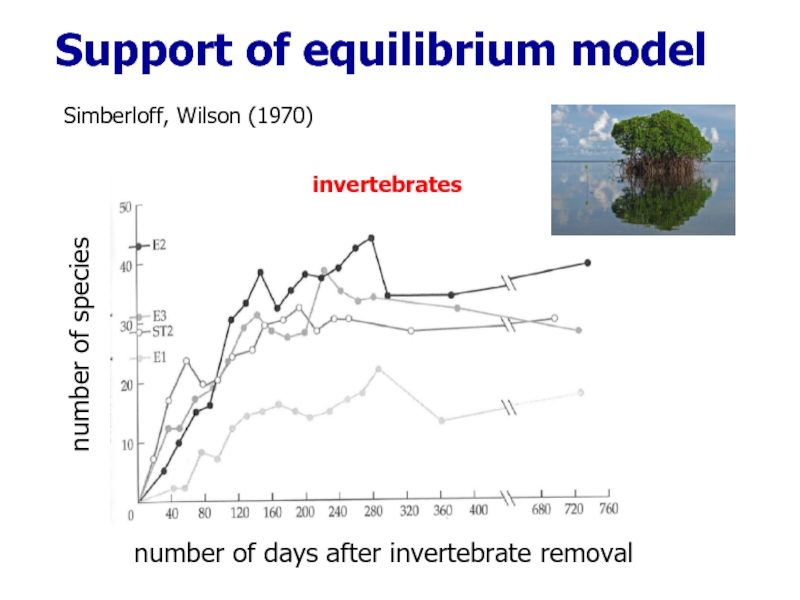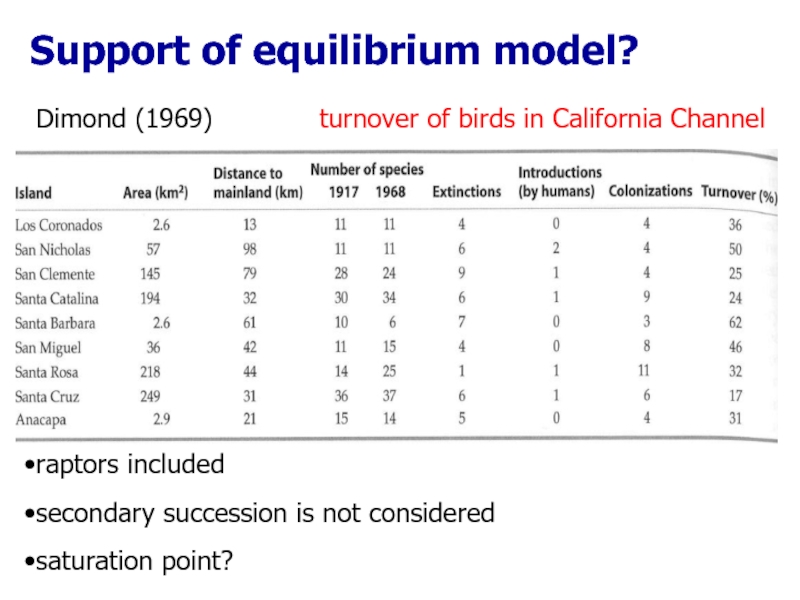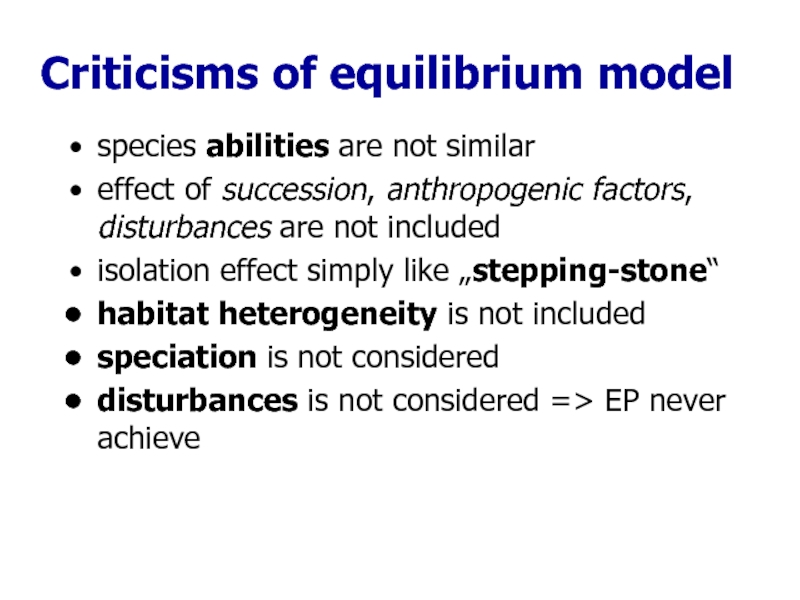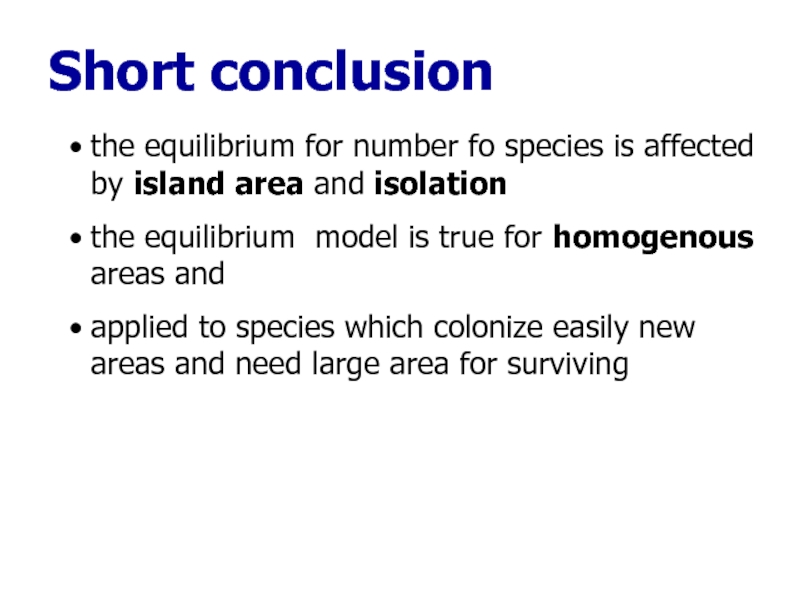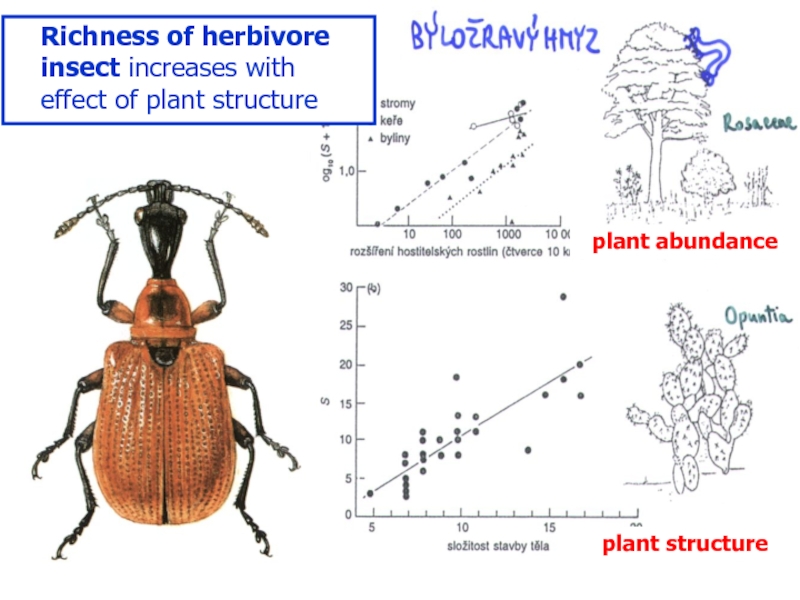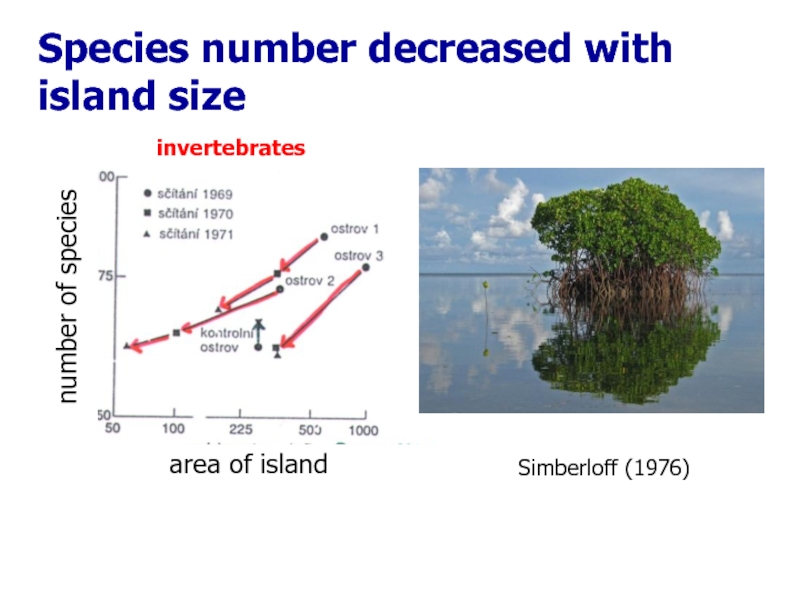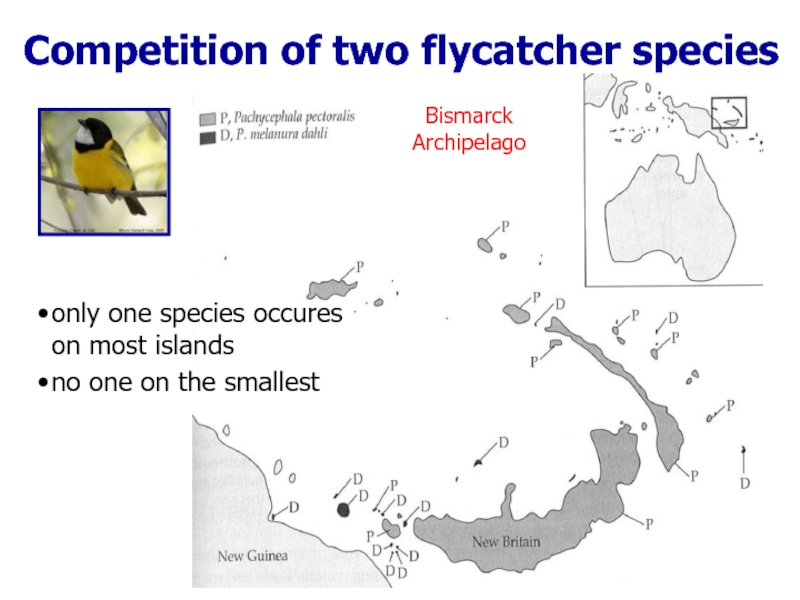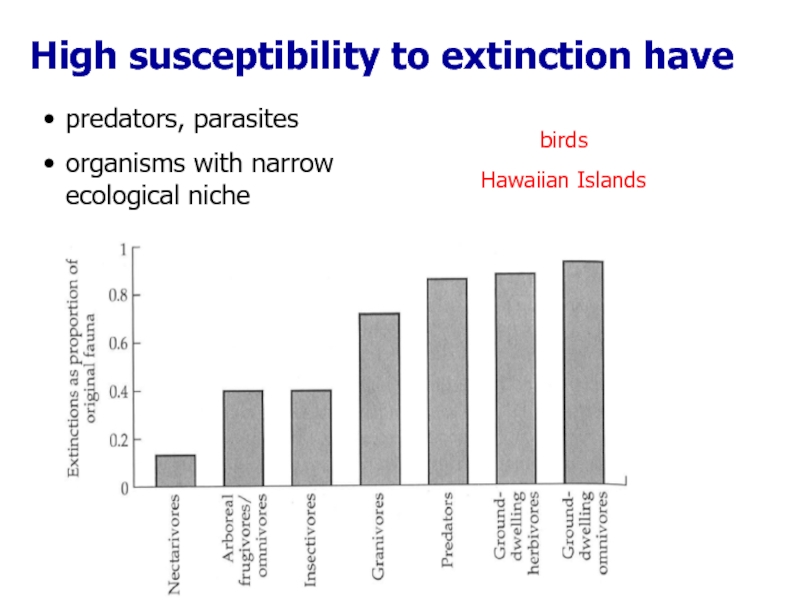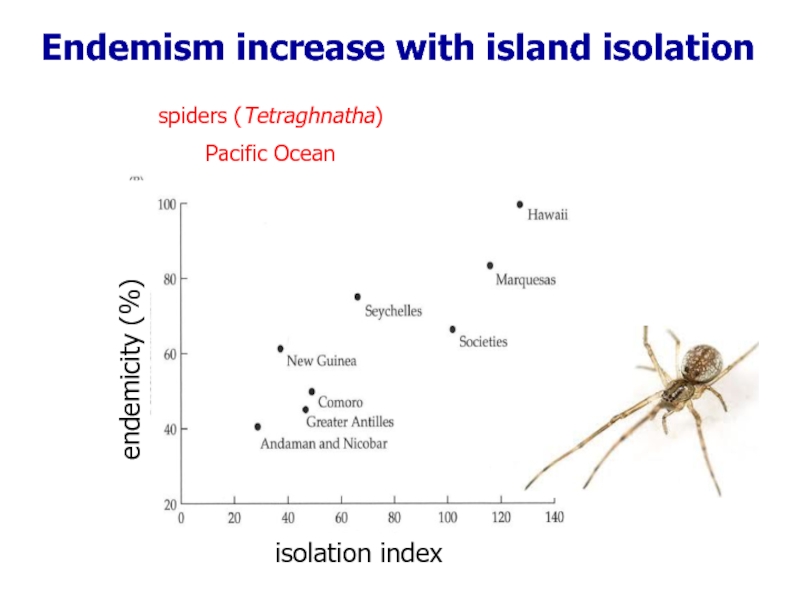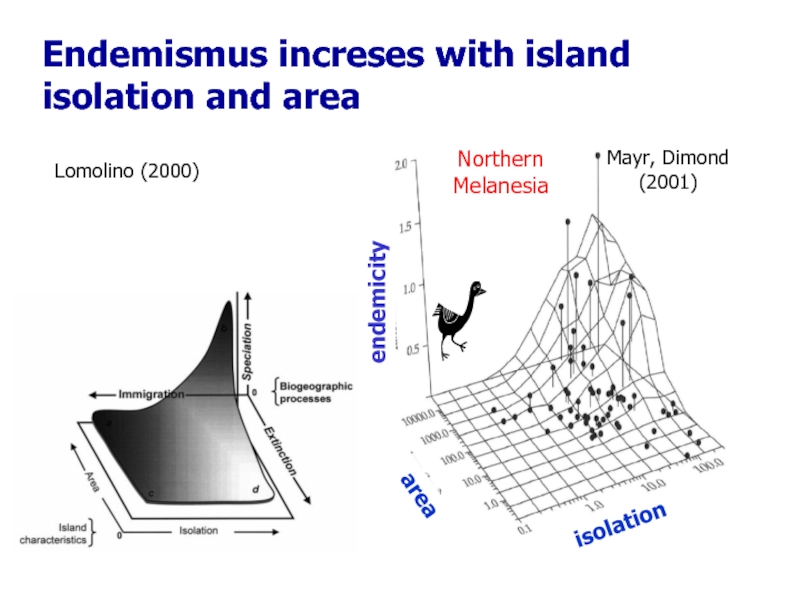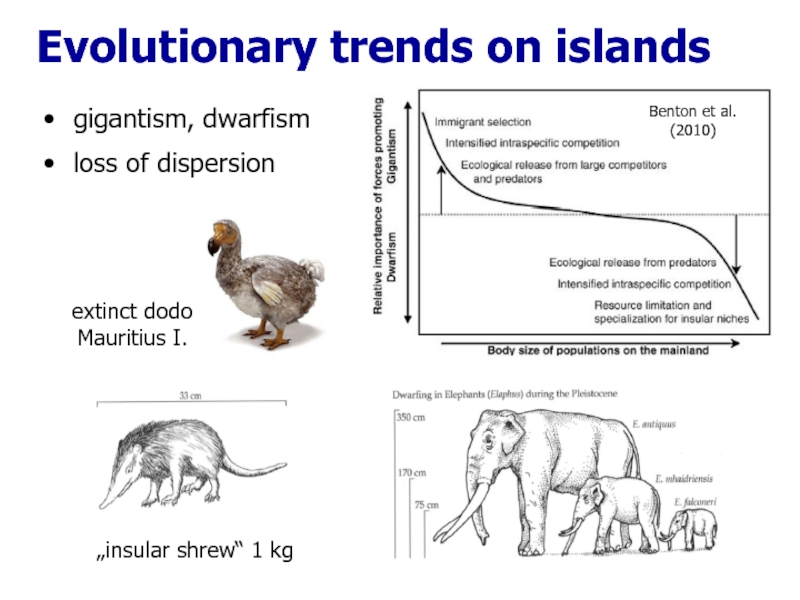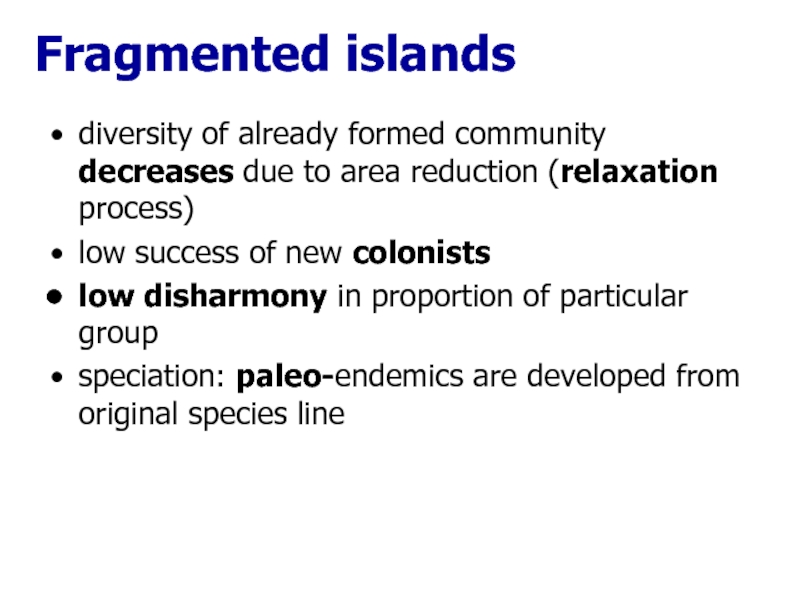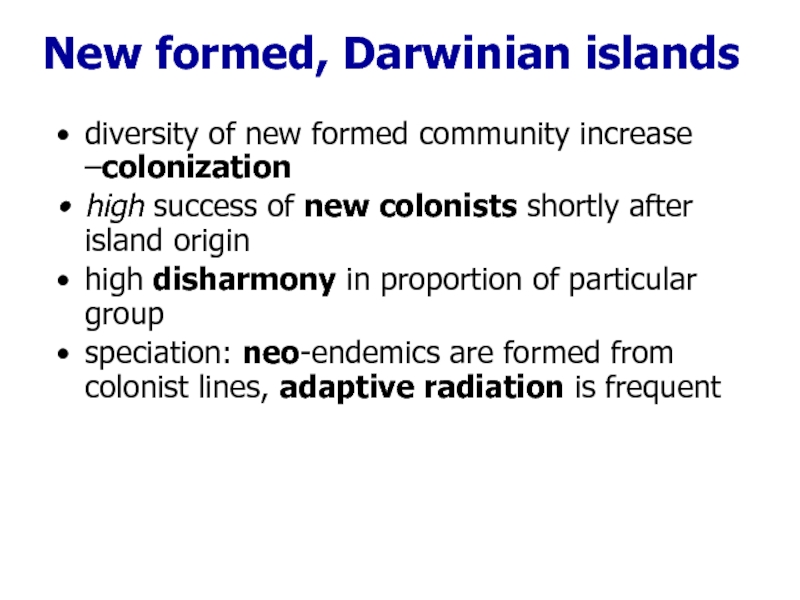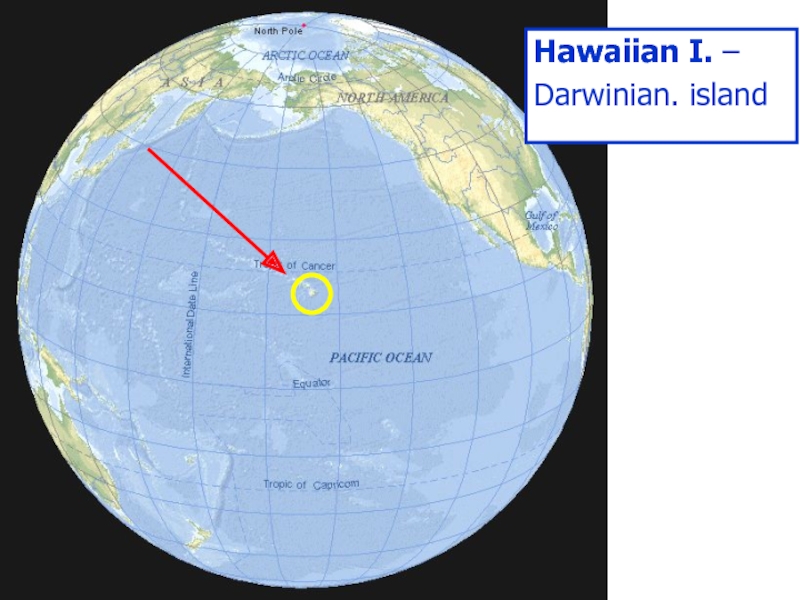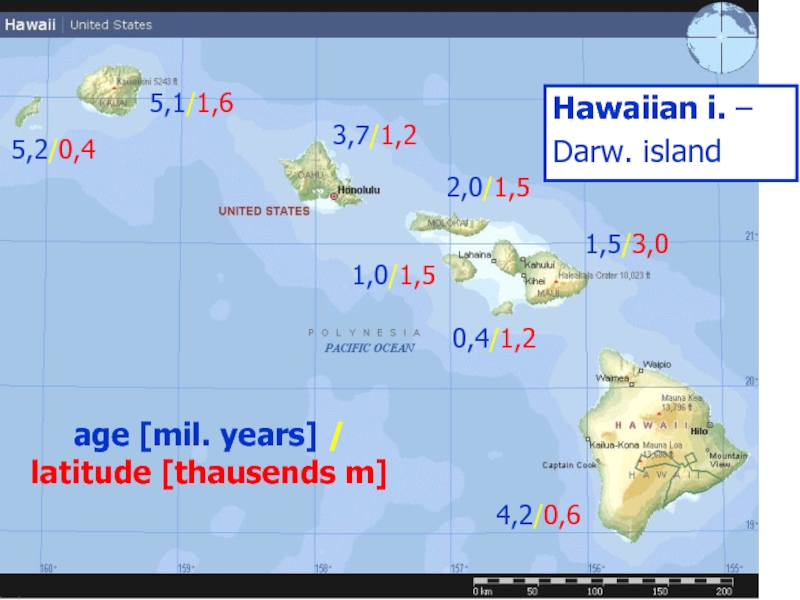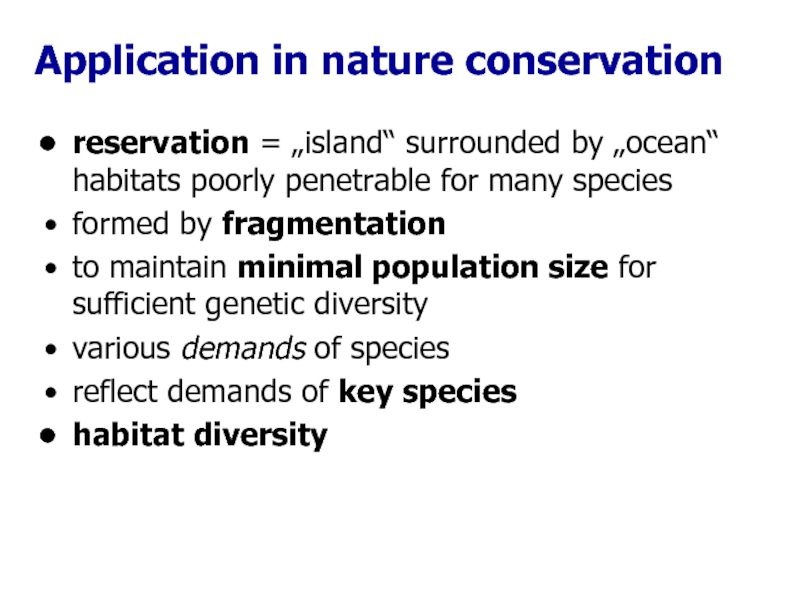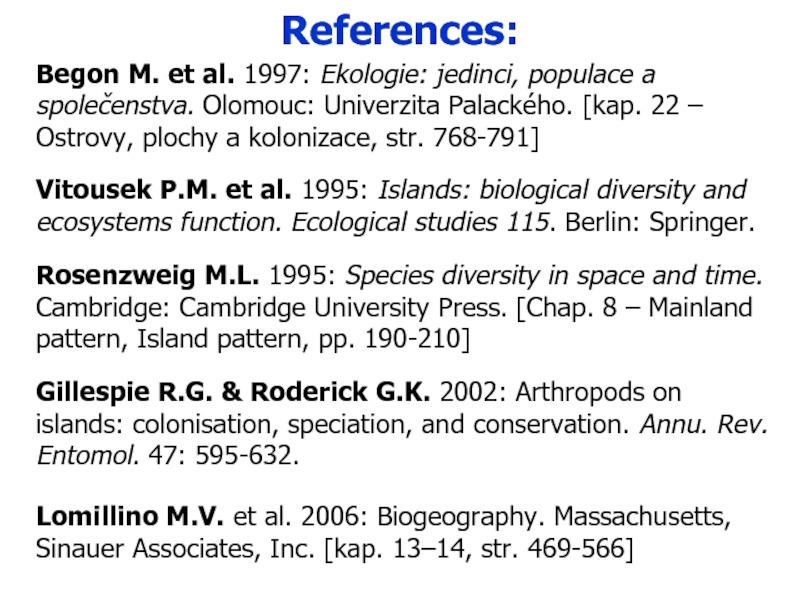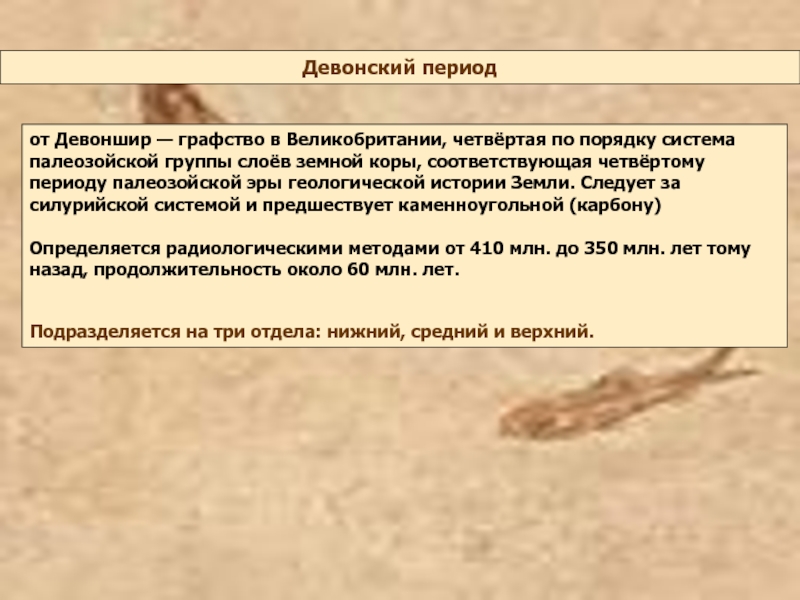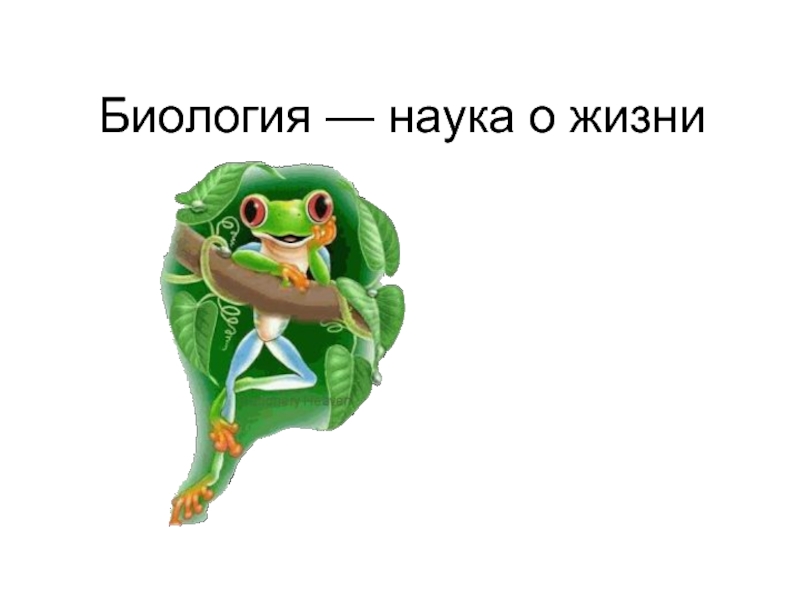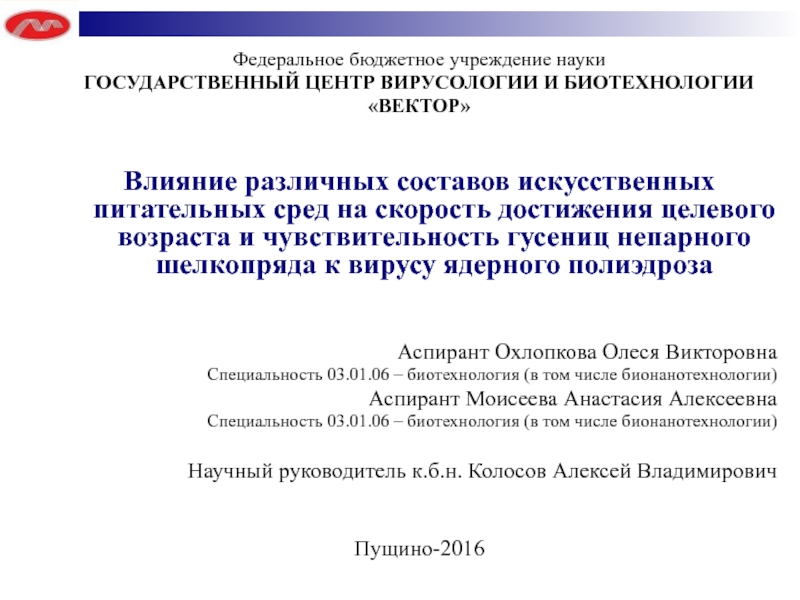- Главная
- Разное
- Дизайн
- Бизнес и предпринимательство
- Аналитика
- Образование
- Развлечения
- Красота и здоровье
- Финансы
- Государство
- Путешествия
- Спорт
- Недвижимость
- Армия
- Графика
- Культурология
- Еда и кулинария
- Лингвистика
- Английский язык
- Астрономия
- Алгебра
- Биология
- География
- Детские презентации
- Информатика
- История
- Литература
- Маркетинг
- Математика
- Медицина
- Менеджмент
- Музыка
- МХК
- Немецкий язык
- ОБЖ
- Обществознание
- Окружающий мир
- Педагогика
- Русский язык
- Технология
- Физика
- Философия
- Химия
- Шаблоны, картинки для презентаций
- Экология
- Экономика
- Юриспруденция
Island biogeography. Diversity on regional scale презентация
Содержание
- 1. Island biogeography. Diversity on regional scale
- 2. Content equilibrium model effect area heterogeneity species evolution in islands
- 3. Diversity on regional scale scale min. of
- 4. MacArthur & Wilson (1963) Number of species increase with island area island area species number
- 5. area of island number of species Hawaiian
- 6. number of species island area The same pattern for habitat islands number of species
- 7. number of species island area Number of species vs. island isolation island isolation
- 8. number of species area of island Number
- 9. distance distance from N. Guinea saturation (%)
- 10. The effect of area and distance
- 11. Krakatua 1883 Rate of colozation is higher in the first period
- 12. Equilibrium model MacArthur & Wilson (1963)
- 13. Equilibrium model applied to islands and habitat
- 14. Simberloff, Wilson (1970) number of species number
- 15. Dimond (1969) turnover of birds in California
- 16. Criticisms of equilibrium model species abilities are
- 17. Short conclusion the equilibrium for number fo
- 18. Peck et al. (1999) Hawaiian islands
- 19. Richness of herbivore insect increases with effect of plant structure plant abundance plant structure
- 20. Species number decreased with island size Simberloff (1976) invertebrates area of island number of species
- 21. Evolutionary point of view is more realistic
- 22. Competition of two flycatcher species Bismarck Archipelago
- 23. High susceptibility to extinction have birds Hawaiian
- 24. Ecological release causes niche shifts Microtus pennsylvanicus Thousand I., St. Lawrence river (NY) Lomolino (1984)
- 25. Proportion of endemic species is related to
- 26. Endemism increase with island isolation spiders (Tetraghnatha) Pacific Ocean isolation index endemicity (%)
- 27. Endemismus increses with island isolation and area Lomolino (2000) area Northern Melanesia
- 28. Evolutionary trends on islands „insular shrew“ 1
- 29. (Gillespie & Roderick 2002) by fragmentation
- 30. Fragmented islands diversity of already formed community
- 31. Madagascar – low disharmony paleo-endemics
- 32. New formed, Darwinian islands diversity of new
- 33. Galapagos - high disharmony neo-endemics
- 34. Adaptive radiation of „Darwinian finches“ (Geospizidae
- 35. 5,1/1,6 Hawaiian I. – Darwinian. island
- 36. Hawaiian i. – Darw. island
- 37. colonization and speciation Drosophila g. bottleneck: 1
- 38. New Guinea – island of mixed origin
- 39. examples – New Guinea, Seychelles I., probably
- 40. reservation = „island“ surrounded by „ocean“ habitats
- 41. species diversity is higher in group of
- 42. Conclusion why insular communities are poorer equilibrium
- 43. References: Begon M. et al. 1997: Ekologie:
Слайд 3Diversity on regional scale
scale min. of hundreds km -> peninsulas, continents
no
effect of climate, ranges of particular species, geographic barriers, speciation processes
Слайд 4MacArthur & Wilson (1963)
Number of species increase with island area
island area
species
Слайд 5area of island
number of species
Hawaiian I.
Azores I.
West Indies
Solomon I.
Number of species
Слайд 8number of species
area of island
Number of species decreases with island isolation
Wilson
Слайд 9distance
distance from N. Guinea
saturation (%)
residuals
nonflying mammals
river of St. Lawrence (NY)
nonmigratory birds
Melanesian
Number of species decreases with island isolation
Слайд 10The effect of area and distance
Prague parks
Frynta et al. (1992)
area
distance from Prague edge (km)
no. in circle = no. of species
Слайд 13Equilibrium model
applied to islands and habitat islands
primary succession, ecological time
effect of
species abilities of colonization and susceptibility to extinction are similar
applied to species number
Слайд 14Simberloff, Wilson (1970)
number of species
number of days after invertebrate removal
Support of
invertebrates
Слайд 15Dimond (1969)
turnover of birds in California Channel
Support of equilibrium model?
raptors included
secondary
saturation point?
Слайд 16Criticisms of equilibrium model
species abilities are not similar
effect of succession, anthropogenic
isolation effect simply like „stepping-stone“
habitat heterogeneity is not included
speciation is not considered
disturbances is not considered => EP never achieve
Слайд 17Short conclusion
the equilibrium for number fo species is affected by island
the equilibrium model is true for homogenous areas and
applied to species which colonize easily new areas and need large area for surviving
Слайд 18Peck et al. (1999)
Hawaiian islands
insect
Species number increases with habitat heterogenity
area
Σ
age
latitude
Σ origin sp.
Слайд 19Richness of herbivore insect increases with effect of plant structure
plant
plant structure
Слайд 20Species number decreased with island size
Simberloff (1976)
invertebrates
area of island
number of species
Слайд 21Evolutionary point of view is more realistic
particular species have different
dispersion abilities
competitive abilities
susceptibility to extinction and speciation
Слайд 22Competition of two flycatcher species
Bismarck Archipelago
only one species occures on most
no one on the smallest
Слайд 23High susceptibility to extinction have
birds
Hawaiian Islands
predators, parasites
organisms with narrow ecological niche
Слайд 24Ecological release causes niche shifts
Microtus pennsylvanicus
Thousand I., St. Lawrence river (NY)
Lomolino
Слайд 25Proportion of endemic species is related to dispersion abilities
% of
dispersion ability
Carambycidae
sedentary lepidoptera
sedentary moths
forest lepidoptera
dipteras
wandering lepidoptera
common lepidoptera
terrestrial birds
sedentary inchworm
acording to Begon et al. (1997)
Слайд 26Endemism increase with island isolation
spiders (Tetraghnatha)
Pacific Ocean
isolation index
endemicity (%)
Слайд 28Evolutionary trends on islands
„insular shrew“ 1 kg
Benton et al. (2010)
gigantism, dwarfism
loss
extinct dodo Mauritius I.
Слайд 29(Gillespie & Roderick 2002)
by fragmentation (fragment islands)
new formed (Darwinian islands)
Next evolutionary
Слайд 30Fragmented islands
diversity of already formed community decreases due to area reduction
low success of new colonists
low disharmony in proportion of particular group
speciation: paleo-endemics are developed from original species line
Слайд 32New formed, Darwinian islands
diversity of new formed community increase –colonization
high success
high disharmony in proportion of particular group
speciation: neo-endemics are formed from colonist lines, adaptive radiation is frequent
Слайд 34Adaptive radiation of
„Darwinian finches“ (Geospizidae family)
founder species from S. Am.
speciation, adaptive radiation
neoendemics
Слайд 37colonization and speciation Drosophila g.
bottleneck: 1 F from Asia?
speciation, neoendemics
12
29
40
26
Слайд 39examples – New Guinea, Seychelles I., probably New Zealand too
long isolation,
Islands of mixed origin
Слайд 40reservation = „island“ surrounded by „ocean“ habitats poorly penetrable for many
formed by fragmentation
to maintain minimal population size for sufficient genetic diversity
various demands of species
reflect demands of key species
habitat diversity
Application in nature conservation
Слайд 41species diversity is higher in group of several small reserves („archipelagos“),
choice between conservation of area or species
effect of biocorridors – immigration avoid local extinction (short isolation in most reserves = no speciation)
Application in nature conservation
Слайд 42Conclusion
why insular communities are poorer
equilibrium model
effect of habitat heterogeneity on island
effect of species abilities on diversity of insular communities (dispersion, speciation, extinction)
effect of island origin on insular communities
application in nature conservation
Слайд 43References:
Begon M. et al. 1997: Ekologie: jedinci, populace a společenstva. Olomouc:
Vitousek P.M. et al. 1995: Islands: biological diversity and ecosystems function. Ecological studies 115. Berlin: Springer.
Rosenzweig M.L. 1995: Species diversity in space and time. Cambridge: Cambridge University Press. [Chap. 8 – Mainland pattern, Island pattern, pp. 190-210]
Gillespie R.G. & Roderick G.K. 2002: Arthropods on islands: colonisation, speciation, and conservation. Annu. Rev. Entomol. 47: 595-632.
Lomillino M.V. et al. 2006: Biogeography. Massachusetts, Sinauer Associates, Inc. [kap. 13–14, str. 469-566]


